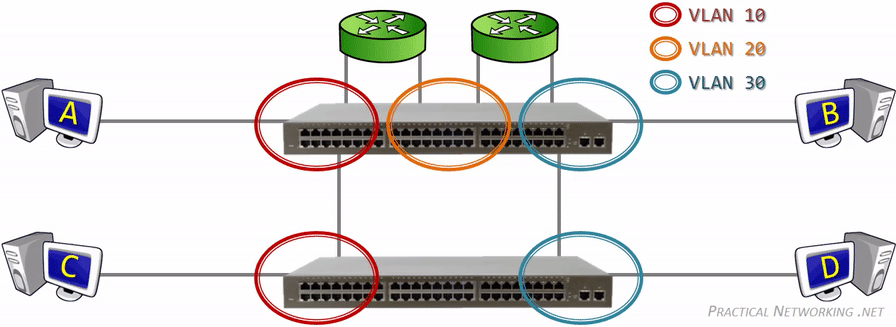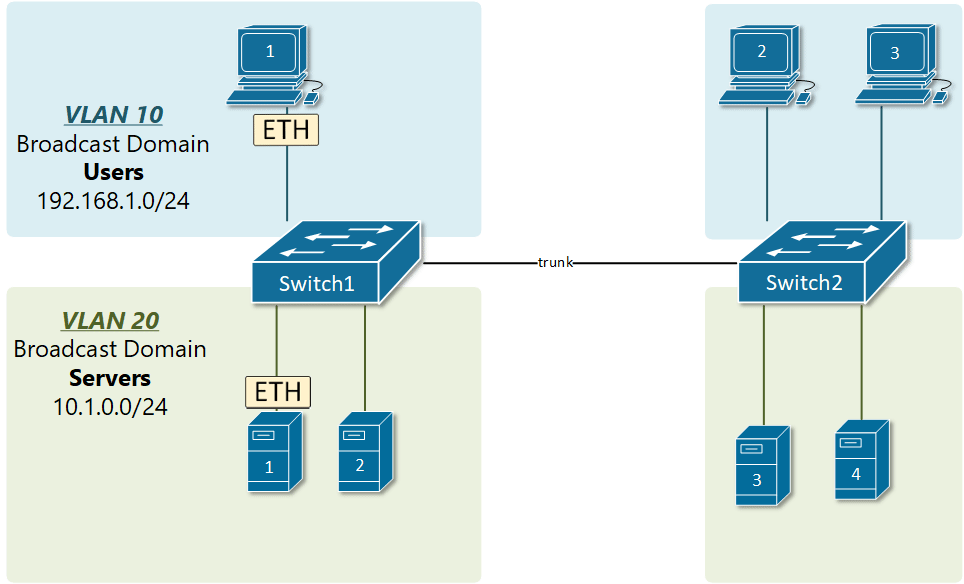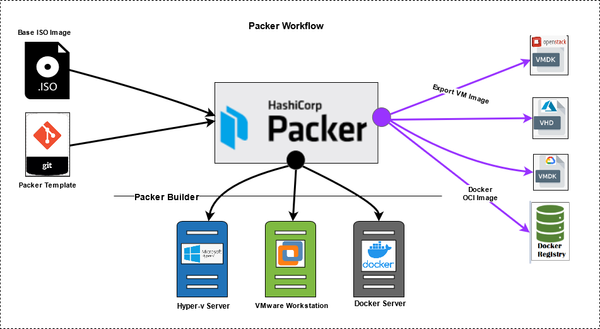Understanding VLAN: A Beginner-Friendly Guide to Virtual LANs
If you've ever set foot in the world of computer networks, you've likely come across the term VLAN. But what exactly is it? Why is it used so widely in modern networking? This guide will walk you through the basics in a simple, beginner-friendly way.
What is a VLAN?
VLAN stands for Virtual Local Area Network. In essence, it’s a way to segment a physical network into multiple logical networks.
Imagine a typical office with dozens or even hundreds of computers connected to a single switch. By default, all devices on the same switch can talk to each other freely. But what if you want to separate the HR department’s traffic from the Engineering department’s? Physically separating them would be expensive and impractical. That’s where VLANs come in.
With VLANs, you can assign each port on a switch to a specific virtual network. Devices in the same VLAN can communicate directly, while those in different VLANs are isolated unless explicitly allowed via a router or Layer 3 switch.
Why Use VLANs?
VLANs are not just about segmentation. They offer real-world benefits in the following key areas:
1. Security
By isolating sensitive data traffic—like finance or HR—from the rest of the network, VLANs reduce the risk of unauthorized access and potential data breaches.
2. Network Performance
VLANs limit broadcast traffic to their own subnet, reducing congestion and improving network speed. Devices in one VLAN don’t need to process unnecessary broadcast messages from another VLAN.
3. Flexibility and Scalability
With VLANs, users don’t have to be physically grouped together. An engineer working remotely or from another floor can still be in the same VLAN as their team—just by configuration.
VLAN Tagging and Standards
To ensure devices understand which VLAN a packet belongs to, VLAN tagging is used. The most common standard is IEEE 802.1Q, which adds a VLAN ID to Ethernet frames.
- Access ports: Carry traffic for a single VLAN.
- Trunk ports: Carry traffic for multiple VLANs (used between switches or switch-router links).
How VLANs Work in Practice
Let’s say you’re managing a network for a company with three departments: Sales, Engineering, and HR. You can configure VLANs like this:
- VLAN 10: Sales
- VLAN 20: Engineering
- VLAN 30: HR

Even though they’re all connected to the same switch, they can only communicate with devices in their own VLAN. If inter-VLAN communication is needed (e.g., HR sending payroll data to Sales), it must go through a router or Layer 3 switch with proper rules.
Hands-on: Simple VLAN Configuration
Let’s say we want to create two VLANs on a Cisco switch:
- VLAN 10 for the Sales team
- VLAN 20 for the Engineering team

Step 1: Create VLANs
Switch> enable
Switch# configure terminal
Switch(config)# vlan 10
Switch(config-vlan)# name Sales
Switch(config-vlan)# exit
Switch(config)# vlan 20
Switch(config-vlan)# name Engineering
Switch(config-vlan)# exitStep 2: Assign Ports to VLANs
Assume:
- Port
FastEthernet 0/1to0/10→ VLAN 10 (Sales) - Port
FastEthernet 0/11to0/20→ VLAN 20 (Engineering)
Switch(config)# interface range fa0/1 - 10
Switch(config-if-range)# switchport mode access
Switch(config-if-range)# switchport access vlan 10
Switch(config-if-range)# exit
Switch(config)# interface range fa0/11 - 20
Switch(config-if-range)# switchport mode access
Switch(config-if-range)# switchport access vlan 20
Switch(config-if-range)# exitStep 3: Verify Configuration
Switch# show vlan briefThis will list all VLANs along with their associated ports.
Real-World Benefits
- Cost-effective: No need to buy separate physical switches.
- Easier network management: Changes can be made via software without rewiring.
- Better compliance: Segmentation helps meet industry regulations (e.g., PCI DSS for payment systems).
Conclusion
VLANs are a powerful tool for organizing, securing, and optimizing your network. Whether you're running a small business or managing enterprise infrastructure, understanding how to implement VLANs effectively can make your network more efficient and secure.



